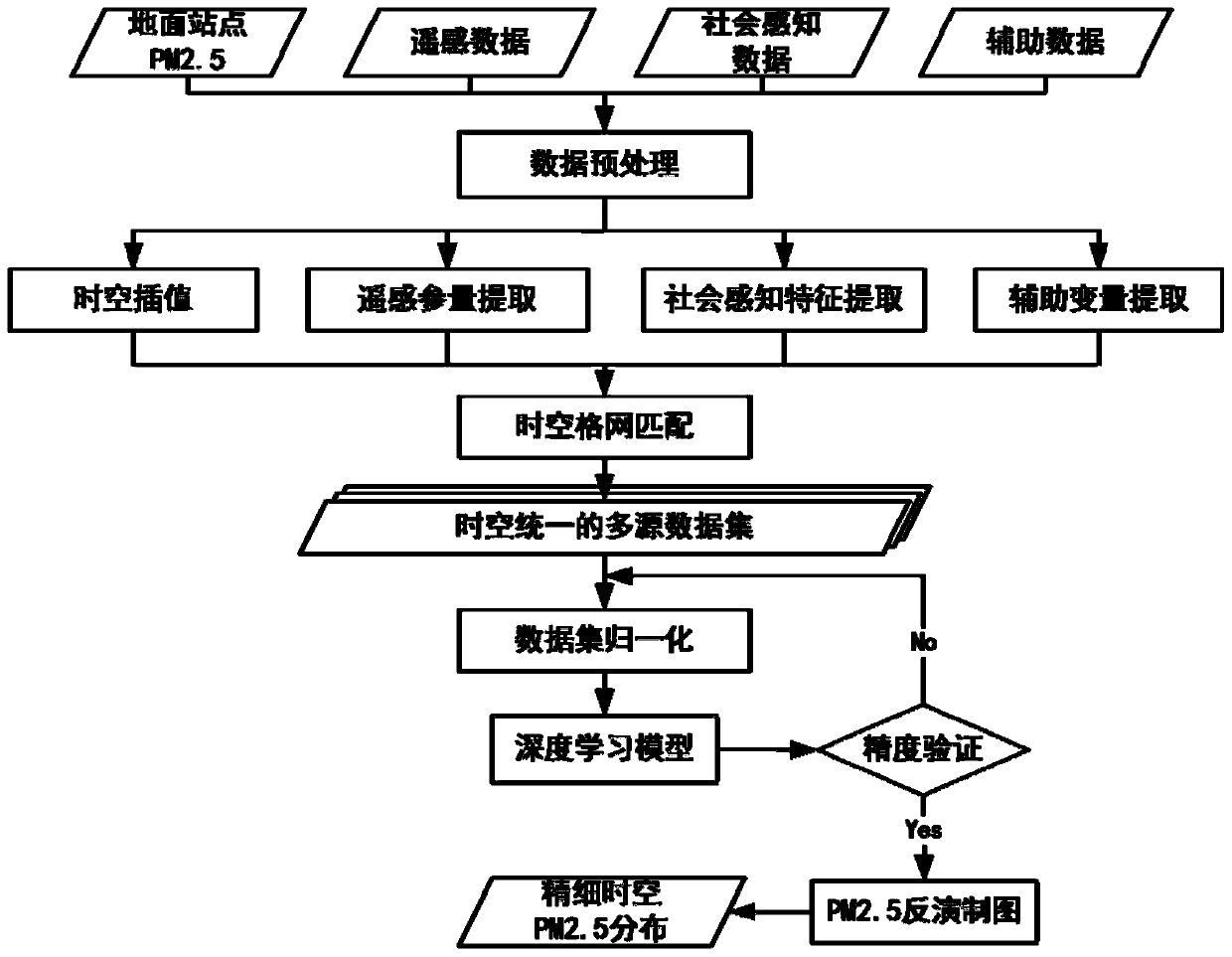PM2.5 deep learning inversion method combining remote sensing data and social perception data
A technology of perception data and remote sensing data, applied in the field of remote sensing image processing and information application, can solve the problems of complex realization, insufficient influencing factors, single satellite remote sensing data social perception data, etc., achieve the effect of simplifying operation and overcoming difficult matching problems
- Summary
- Abstract
- Description
- Claims
- Application Information
AI Technical Summary
Problems solved by technology
Method used
Image
Examples
Embodiment Construction
[0029] In order to facilitate those of ordinary skill in the art to understand and implement the present invention, the present invention will be described in further detail below in conjunction with the accompanying drawings and embodiments. It should be understood that the implementation examples described here are only used to illustrate and explain the present invention, and are not intended to limit this invention.
[0030] There are many factors that affect the concentration of PM2.5 and the relationship is complex, which leads to the challenge of inverting the fine temporal and spatial distribution of PM2.5. The natural characteristics of remote sensing data and the socioeconomic attributes of social perception data can be used to fully mine useful information based on deep learning, so as to realize the inversion of fine spatiotemporal PM2.5 distribution.
[0031] please see figure 1 A method for inversion of PM2.5 deep learning combining remote sensing data and socia...
PUM
 Login to View More
Login to View More Abstract
Description
Claims
Application Information
 Login to View More
Login to View More - R&D
- Intellectual Property
- Life Sciences
- Materials
- Tech Scout
- Unparalleled Data Quality
- Higher Quality Content
- 60% Fewer Hallucinations
Browse by: Latest US Patents, China's latest patents, Technical Efficacy Thesaurus, Application Domain, Technology Topic, Popular Technical Reports.
© 2025 PatSnap. All rights reserved.Legal|Privacy policy|Modern Slavery Act Transparency Statement|Sitemap|About US| Contact US: help@patsnap.com



